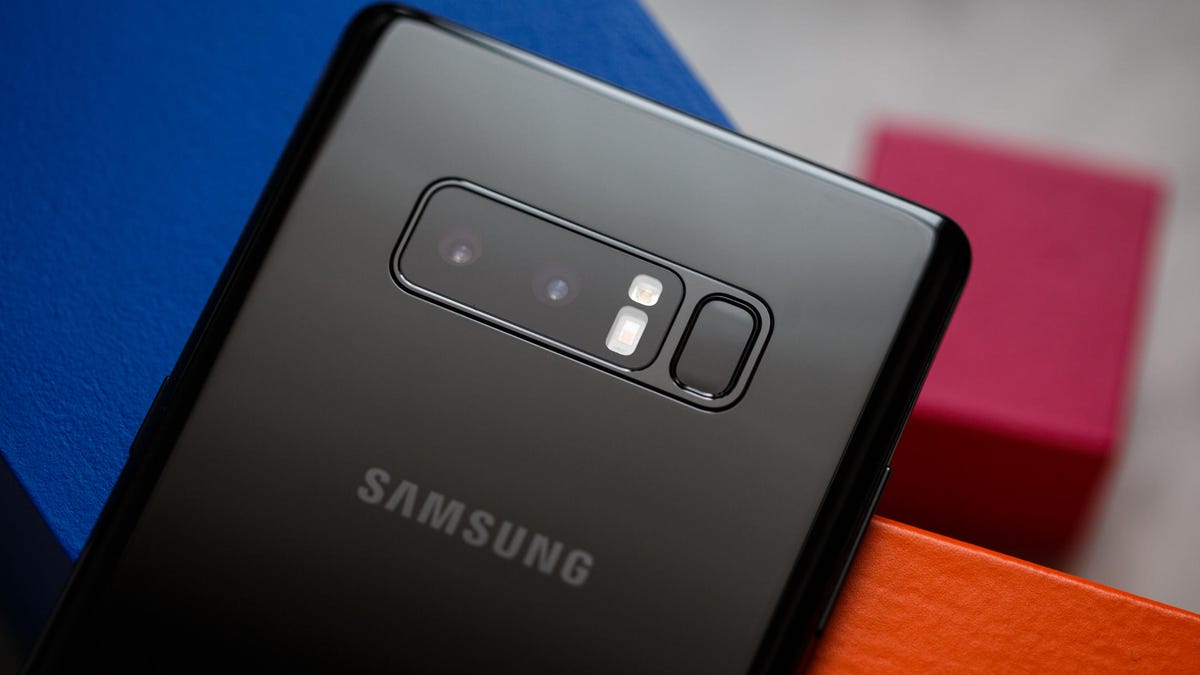Galaxy Note 8's dual camera beats iPhone because of one spec
The Note 8 marks the first time dual rear cameras have appeared on a flagship Samsung device.

Welcome to the dual-rear-camera club, Samsung Galaxy Note 8.
Samsung, welcome to the dual-rear-camera club. It's the fastest growing club for phones, with members like the Huawei P10, the OnePlus 5, the LG G6, the Essential Phone and of course, the iPhone 7 Plus. So how can the Galaxy Note 8 stand out?
Easy. It has one spec that no other dual-rear-camera phone has: both cameras have optical image stabilization (OIS). For photos this means the shutter can stay open longer, resulting in better low-light snaps. For video this means a reduction in the amount of visible shake in your recording.
Other phones like the iPhone 7 Plus, LG G6 and Huawei P10 have OIS, but only on one of their rear cameras. For example, the 7 Plus has OIS on the wide-angle camera, but not on the telephoto one.
Telephoto shots lend themselves to be more shaky so adding OIS to the longer lens will be particularly useful. The result is the Note 8 gets all the advantages of OIS no matter which camera you're using.
Dual OIS also opens the hardware door for more advances in augmented reality apps, which can use the Note 8's cameras for more precise tracking and layering of AR images.
The Note 8 has two 12-megapixel rear cameras. One is a wide-angle, the other a telephoto.
But Samsung is not just resting its photographic hat on dual OIS. The Note 8's wide-angle camera has a dual-pixel sensor (like the Galaxy S8) which allows for fast and accurate autofocus no matter where your subject is in the frame.
The Note 8 also added a couple of other noteworthy new features. One is called Dual Capture, which simultaneously takes a picture with both rear cameras giving you the option between a wide-angle photo and a telephoto one.
There is also Live Focus which lets you create an photo with bokeh (artistic background blur). The iPhone 7 Plus and OnePlus 5 call this portrait mode. The difference here is that Live Focus lets you preview and adjust the amount of bokeh before taking a photo, much like the Huawei Honor 6X. You can also edit the background blur effect after the fact using the Gallery app.
The Note 8 also has 2X optical zoom which means when you zoom in on a scene, your photos don't get that noisy and super-low-resolution look that digital zoom gives you.
While all of these comparisons are just on paper, the Note 8's dual camera is something I am excited to test. Take a look below at how its camera specs stack up against the competition's and look for a full on Note 8 camera shootout soon.
Camera specs for the Samsung Galaxy Note 8, iPhone 7 Plus and OnePlus 5
| Samsung Galaxy Note 8 | iPhone 7 Plus | OnePlus 5 | |
| Wide-angle resolution | 12 megapixels | 12 megapixels | 16 megapixels |
| Telephoto resolution | 12 megapixels | 12 megapixels | 20 megapixels |
| Wide-angle aperture | f/1.7 | f/1.8 | f/1.7 |
| Telephoto aperture | f/2.4 | f/2.8 | f/2.6 |
| Optical image stabilization | Both wide-angle and telephoto | Wide-angle only | No |
| Optical zoom | 2X | 2X | 1.6X |
| Digital zoom | 10X | 10X | 8X |
| Video | 4K and HD | 4K and HD | 4K and HD |
| Slow motion | 240fps at 720P, 60fps at 1,080P | 240fps at 720P, 120fps at 1,080P | 120fps at 720P, 60fps at 1,080P |
| Front camera resolution | 8-megapixels | 7-megapixels | 16-megapixels |
| Front camera aperture | f/1.7 | f/2.2 | f/2.0 |

